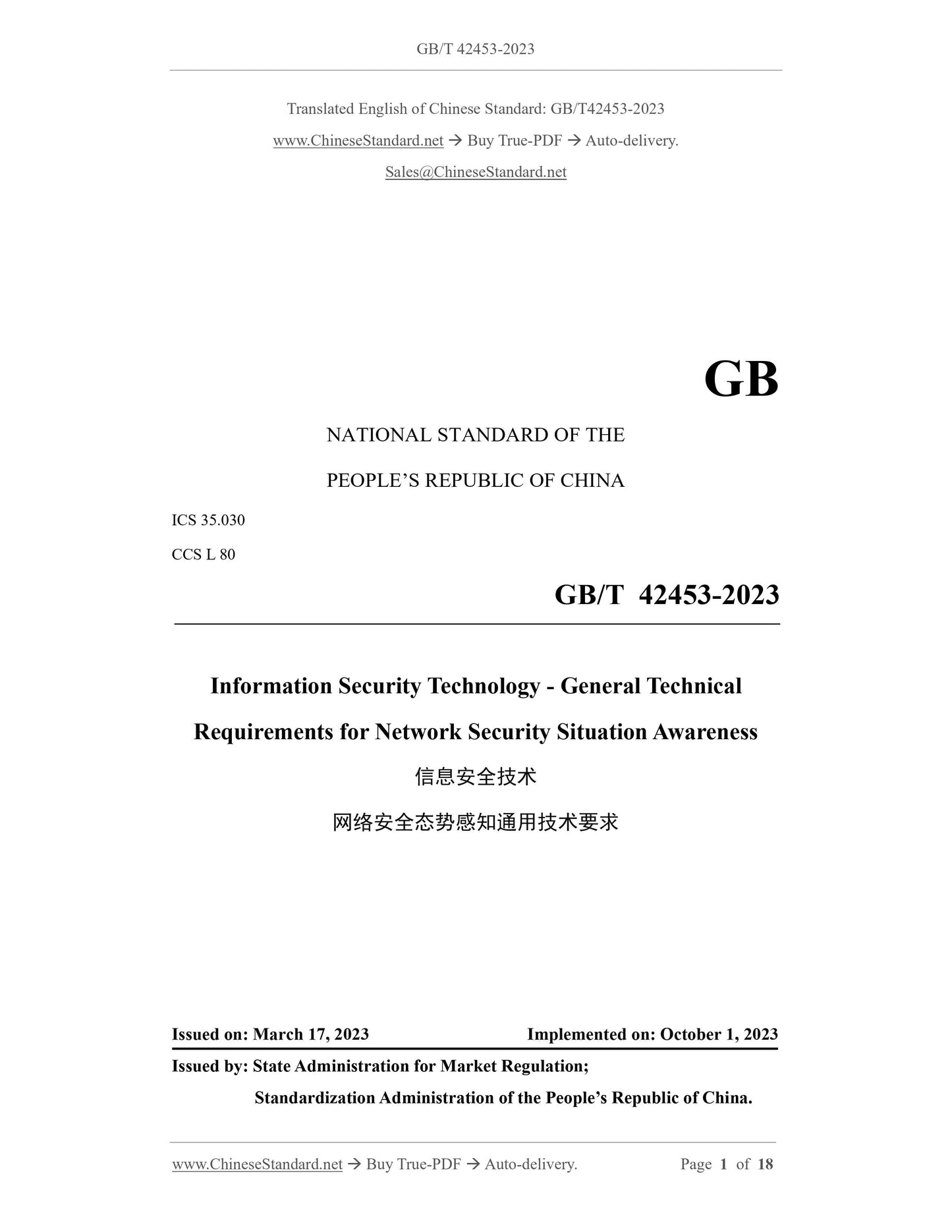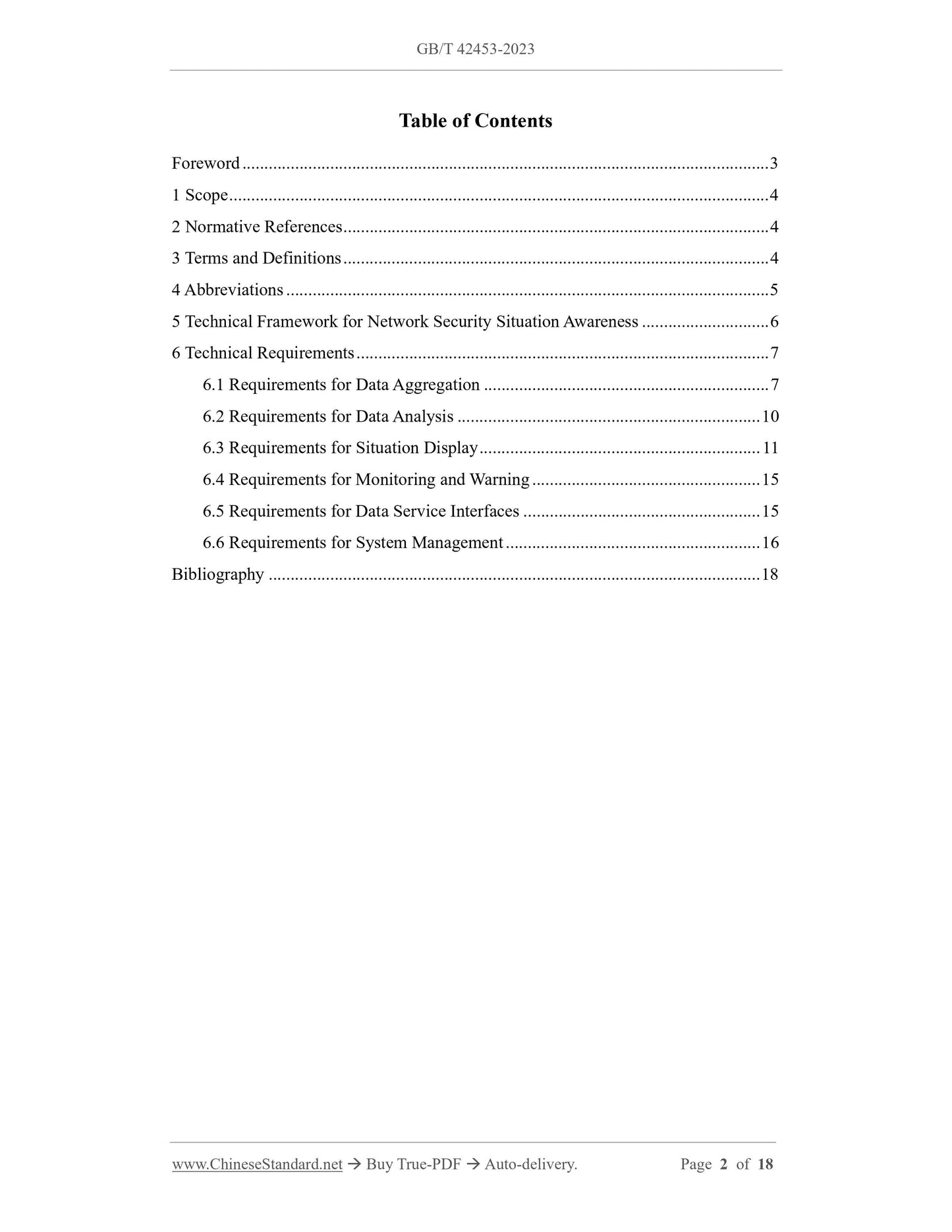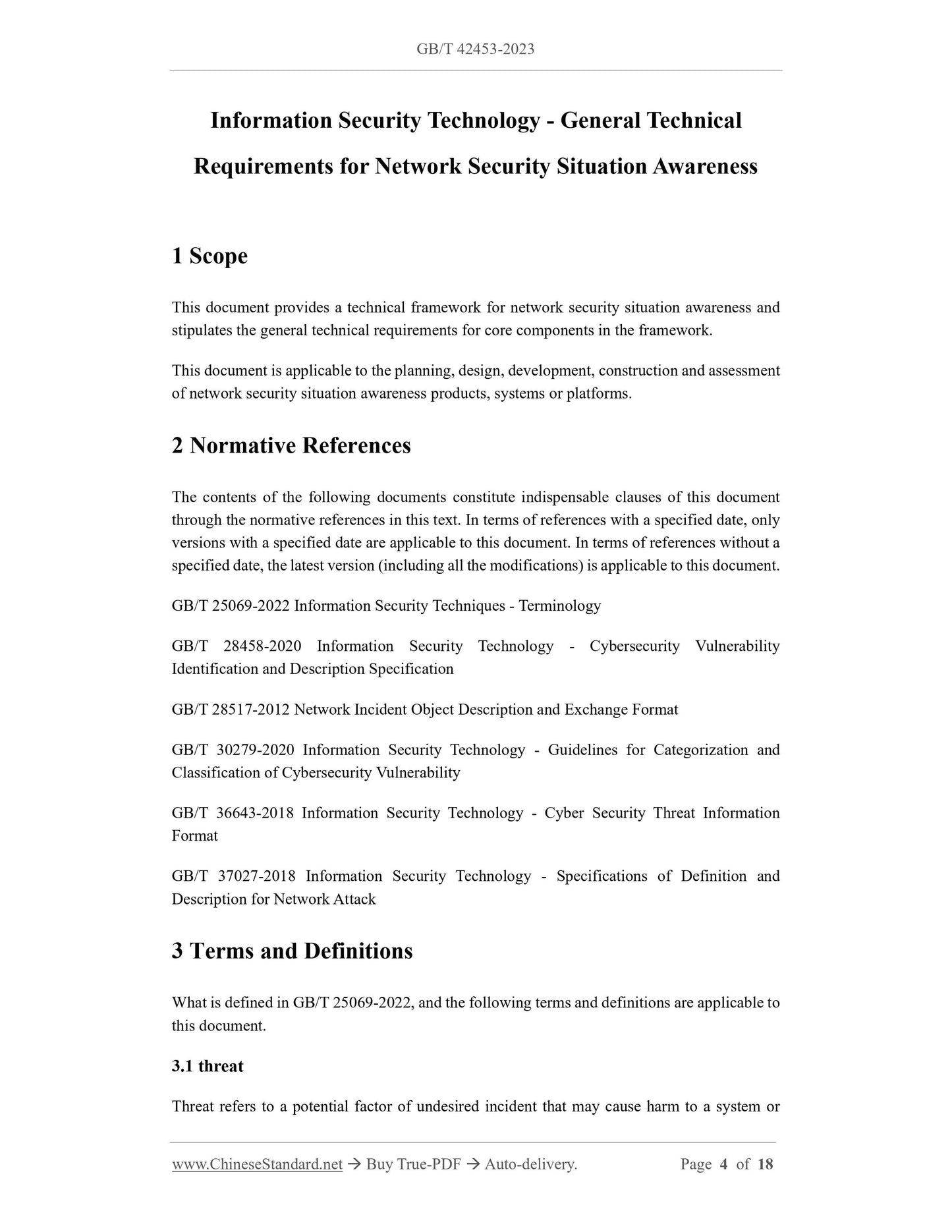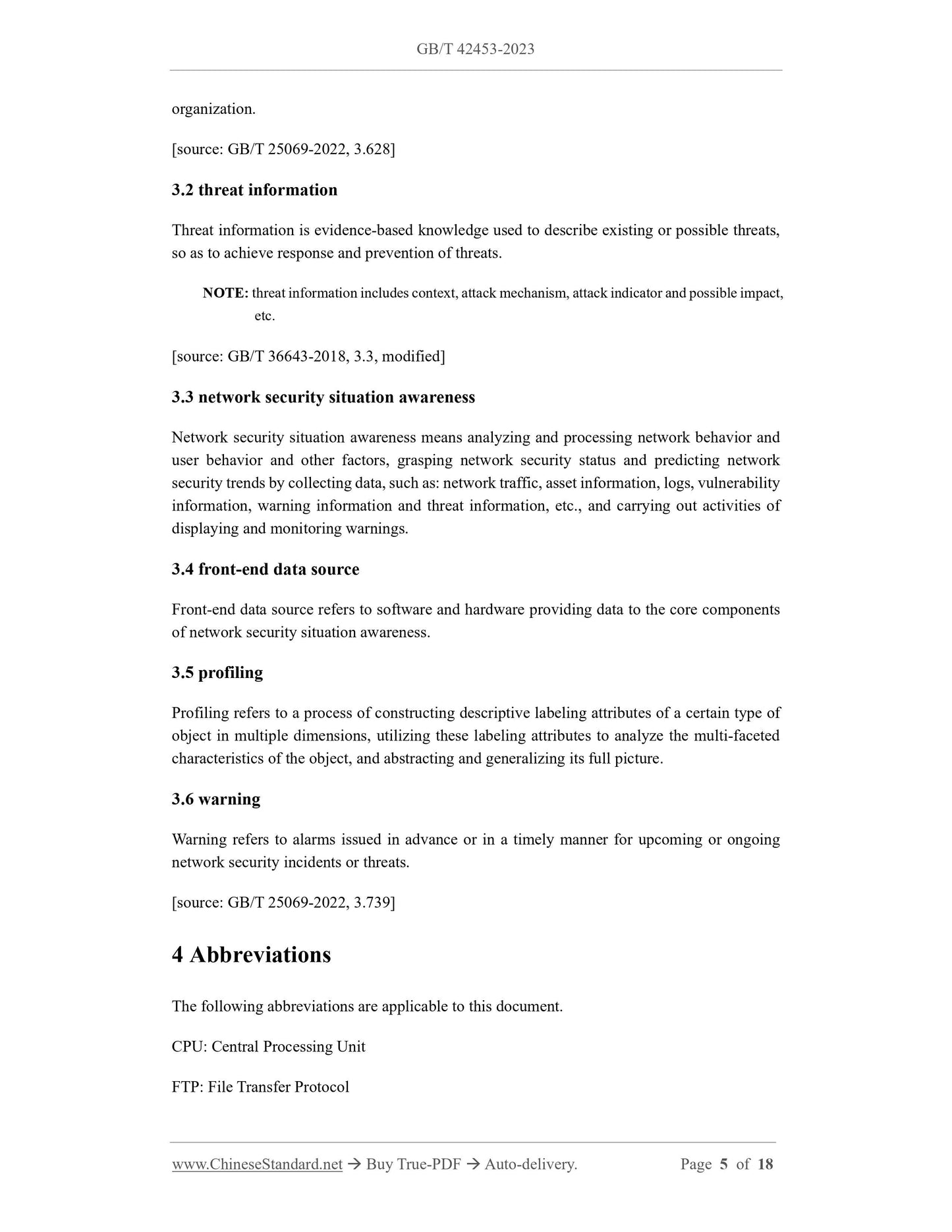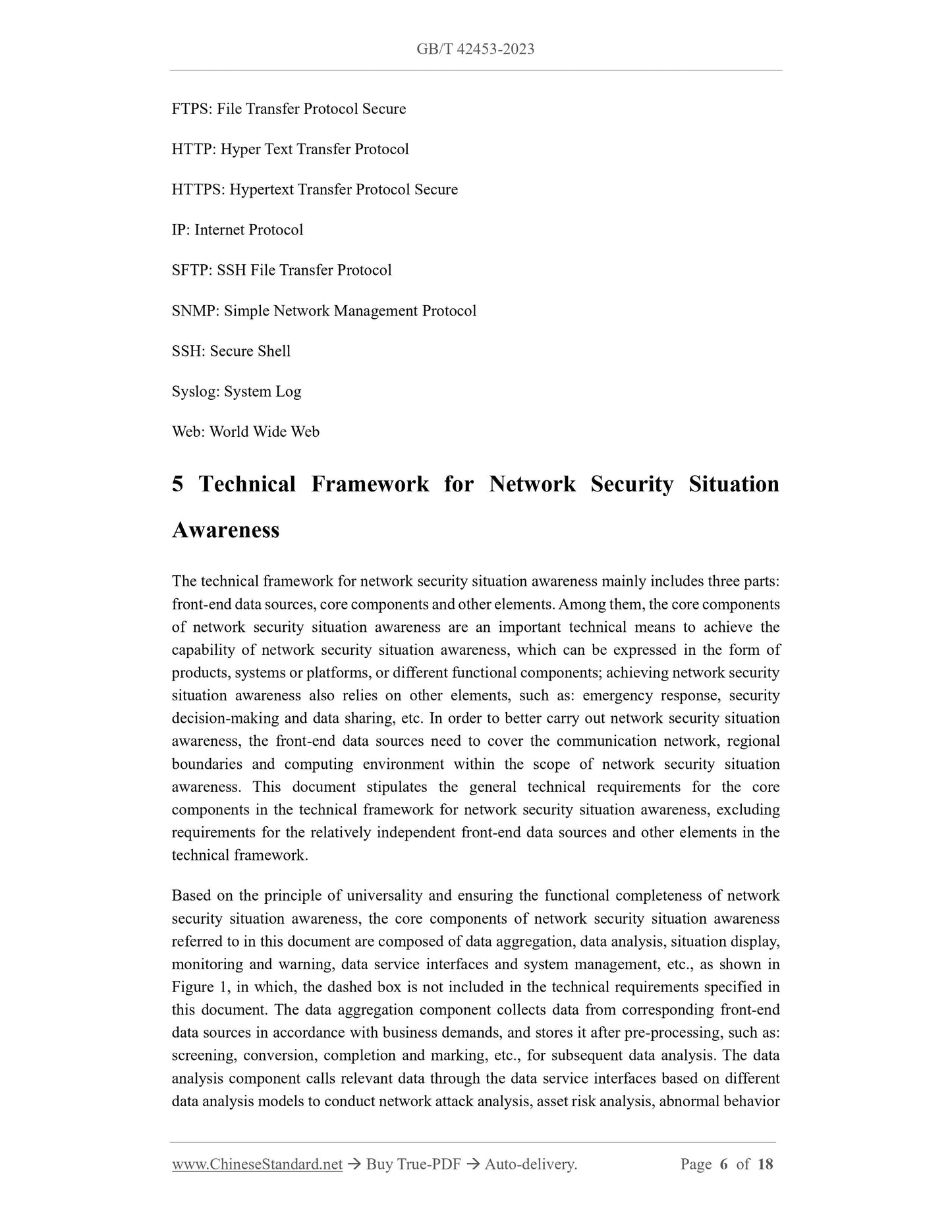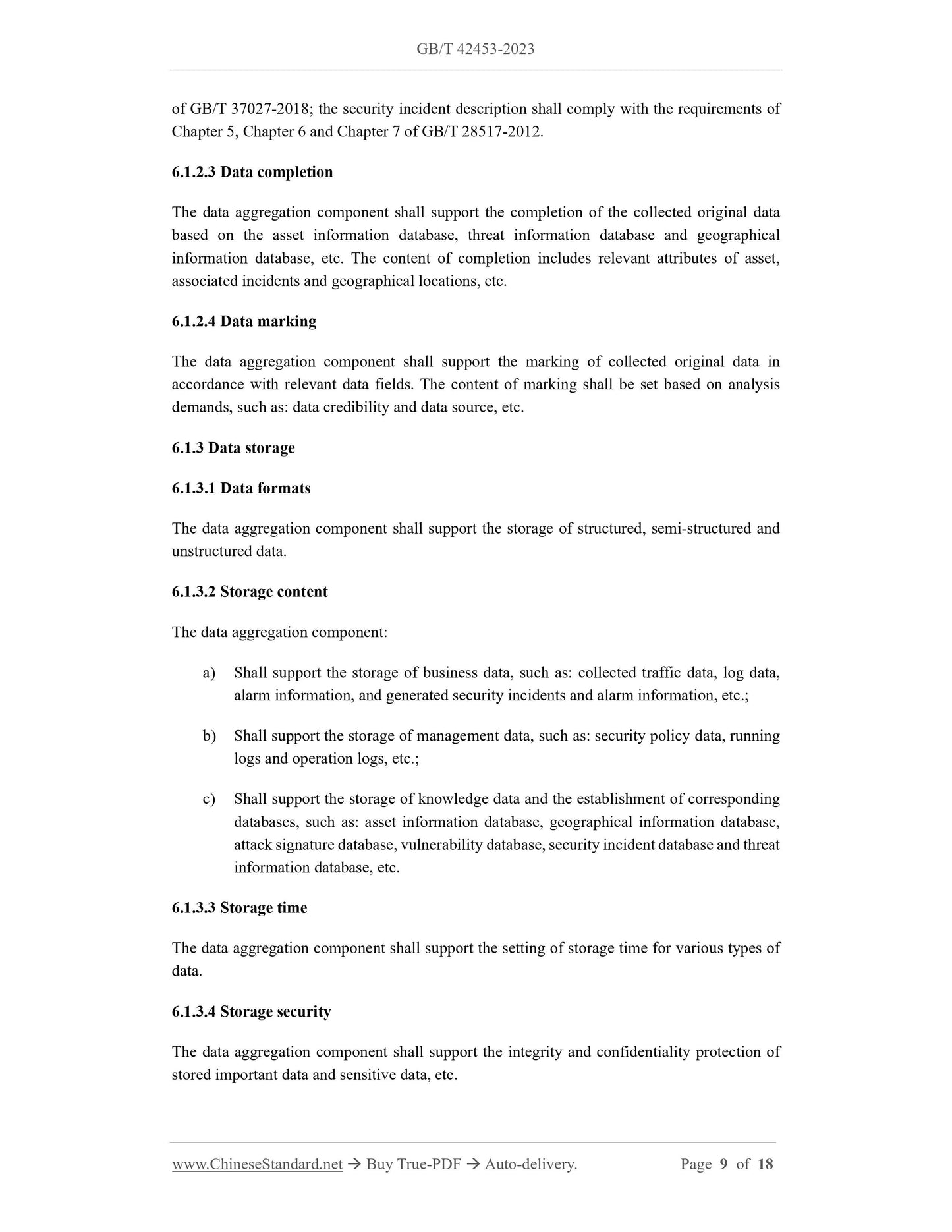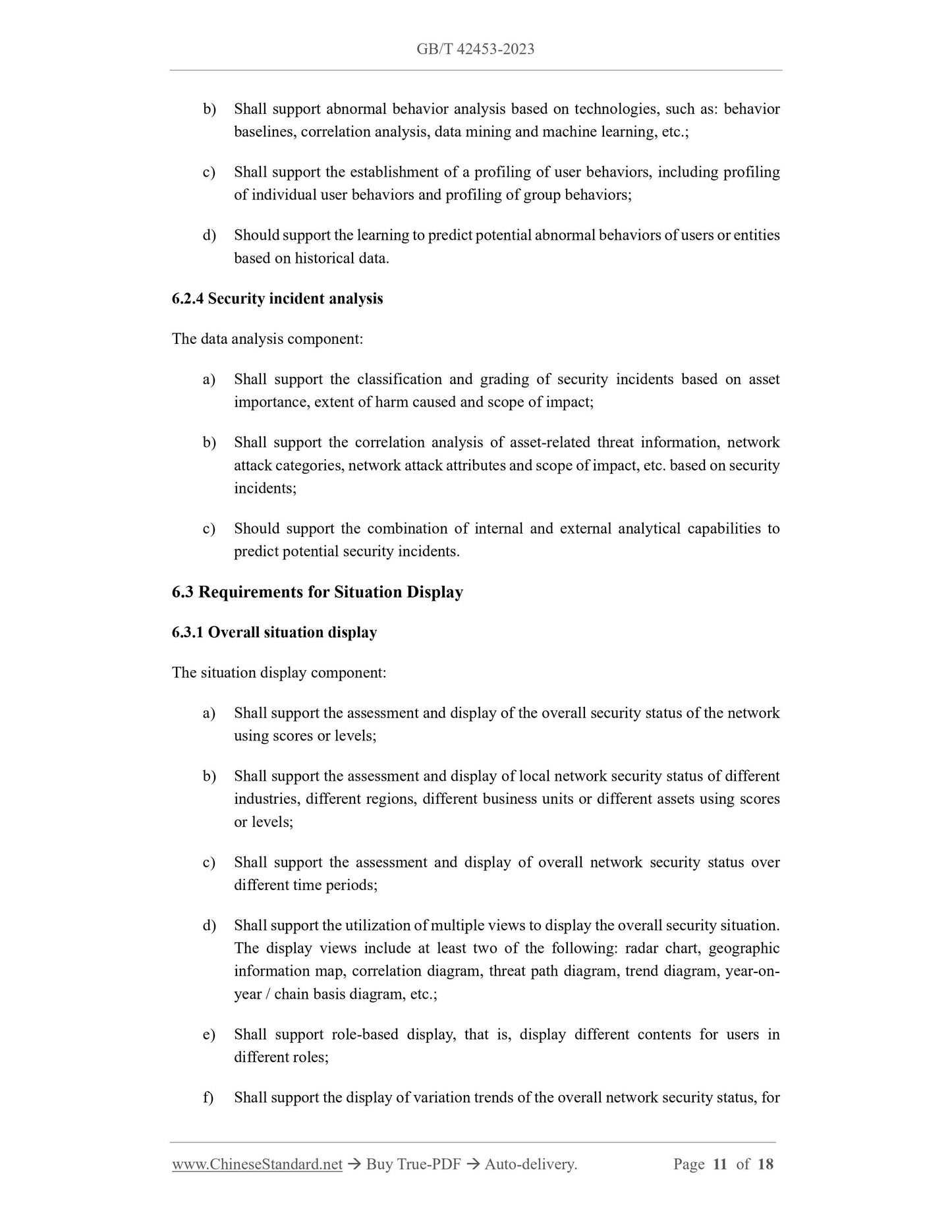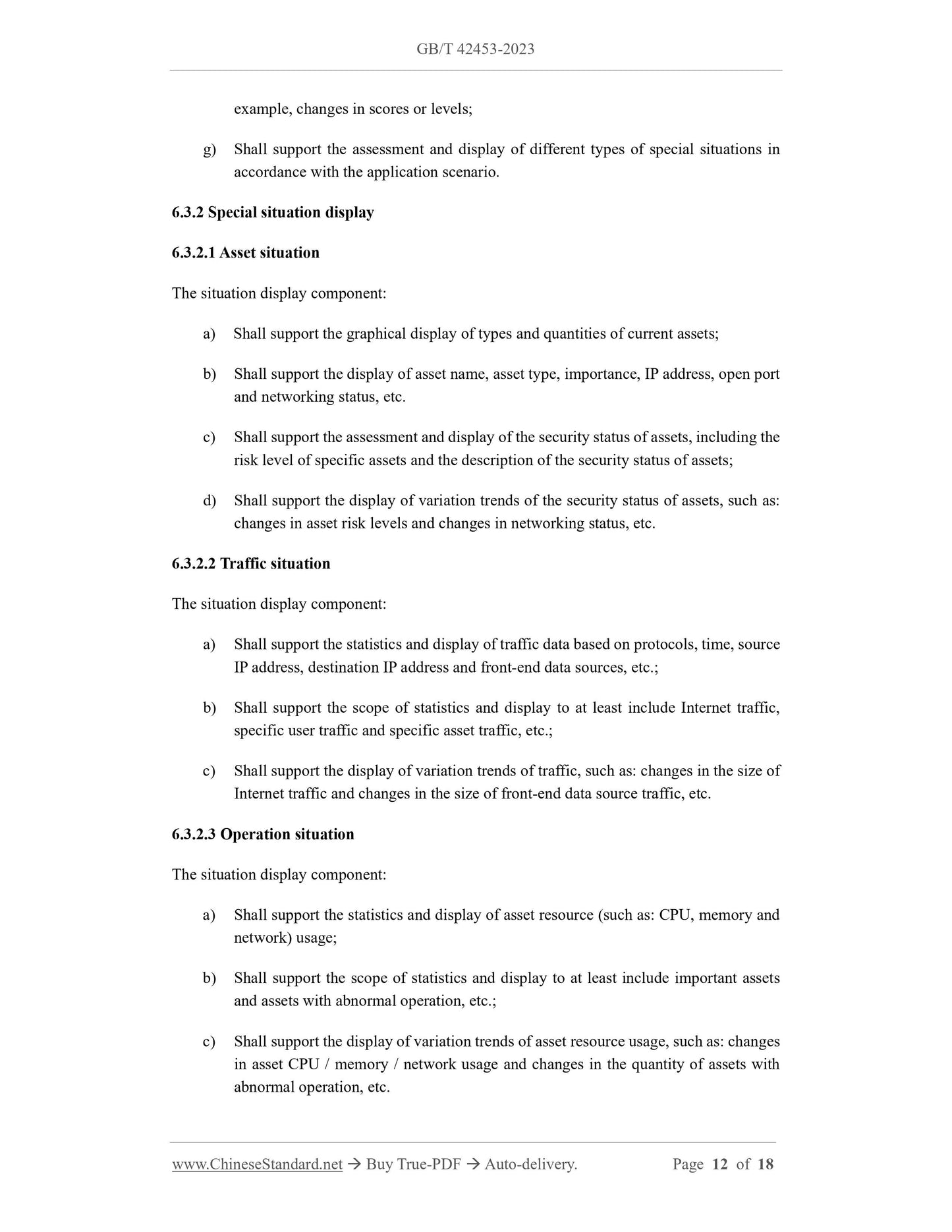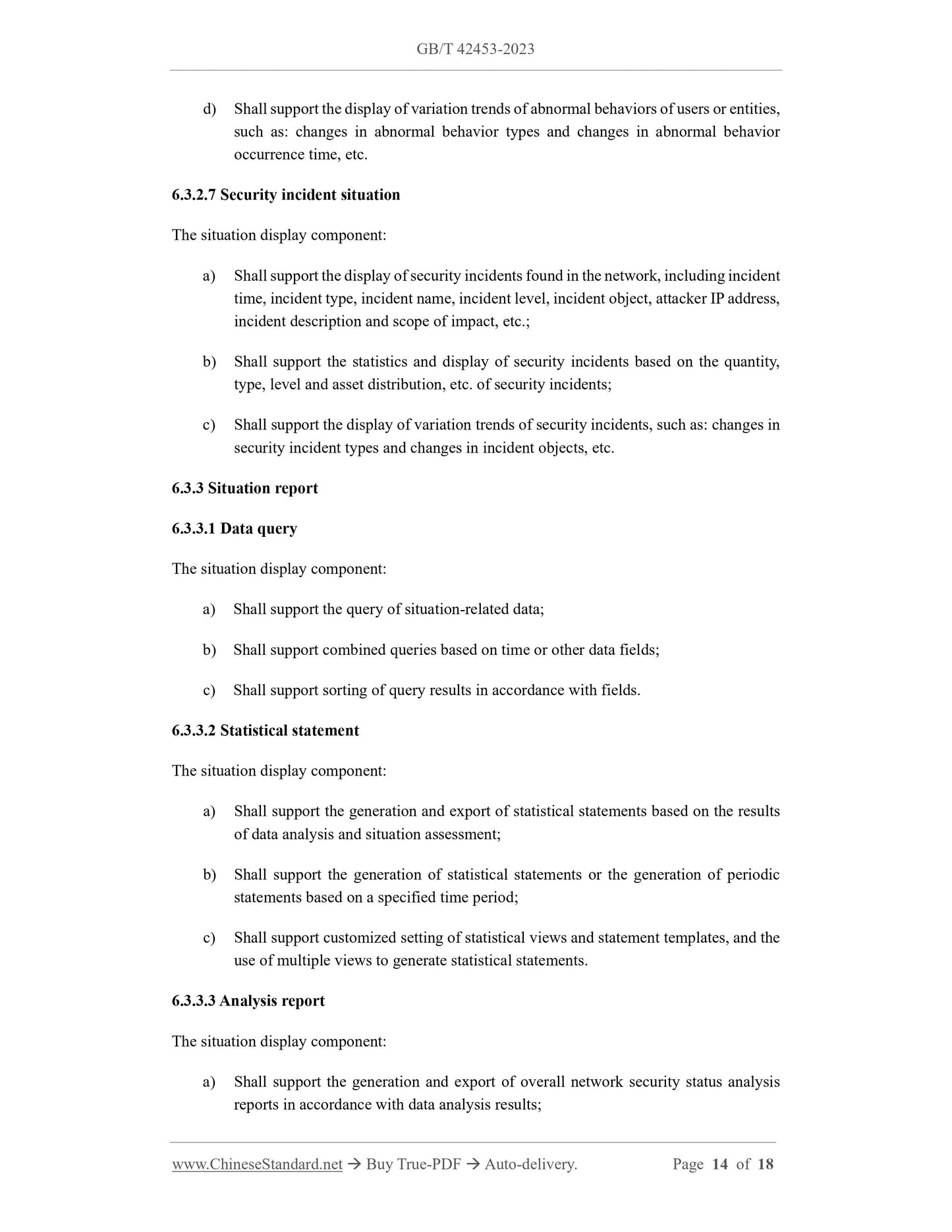1
/
of
11
www.ChineseStandard.us -- Field Test Asia Pte. Ltd.
GB/T 42453-2023 English PDF (GB/T42453-2023)
GB/T 42453-2023 English PDF (GB/T42453-2023)
Regular price
$260.00
Regular price
Sale price
$260.00
Unit price
/
per
Shipping calculated at checkout.
Couldn't load pickup availability
GB/T 42453-2023: Information security technology - General technical requirements for network security situation awareness
Delivery: 9 seconds. Download (and Email) true-PDF + Invoice.Get Quotation: Click GB/T 42453-2023 (Self-service in 1-minute)
Newer / historical versions: GB/T 42453-2023
Preview True-PDF
Scope
This document provides a technical framework for network security situation awareness andstipulates the general technical requirements for core components in the framework.
This document is applicable to the planning, design, development, construction and assessment
of network security situation awareness products, systems or platforms.
Basic Data
| Standard ID | GB/T 42453-2023 (GB/T42453-2023) |
| Description (Translated English) | Information security technology - General technical requirements for network security situation awareness |
| Sector / Industry | National Standard (Recommended) |
| Classification of Chinese Standard | L80 |
| Classification of International Standard | 35.030 |
| Word Count Estimation | 14,190 |
| Date of Issue | 2023-03-17 |
| Date of Implementation | 2023-10-01 |
| Issuing agency(ies) | State Administration for Market Regulation, China National Standardization Administration |
Share
